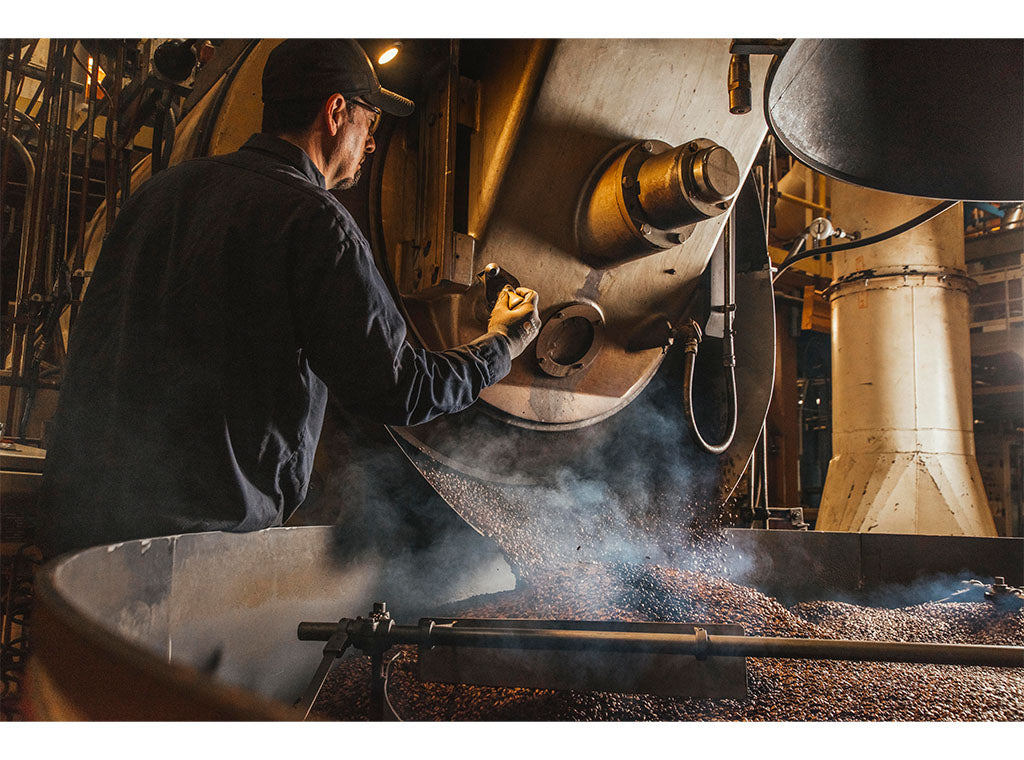
The Coffee Freshness Handbook: Everything You Need to Know
The Coffee Freshness Handbook: Everything You Need to Know
When it comes to brewing the perfect cup, freshness isn’t just nice—it’s everything. Yet even the most devoted coffee lovers are often unsure what “fresh” actually means. Is it about roast date? Smell? Storage? And does freezing actually help?
In this guide, we break down the science behind coffee freshness, dispel popular myths, and help you understand exactly how to keep your coffee tasting its best—from bag to brew.
Why Coffee Freshness Matters
Great coffee is a fleeting thing. Once roasted, beans begin to lose the volatile compounds that create the complex aromas and flavors we love. Those floral, nutty, chocolatey, or citrusy notes? They fade with time, exposure to air, and even light. That’s why freshness after roasting is such a big deal.
Fresh coffee = flavorful coffee. Period.
The Science of Freshness: What Happens After Roasting?
Roasting kicks off a chemical cascade. Beans release CO₂, undergo oxidation, and become more sensitive to environmental factors. Let’s break that down:
-
Oxidation
As soon as coffee is roasted, oxygen starts breaking down the oils and aromatic compounds. This dulls the flavor over time—even if the beans still smell okay. -
CO₂ Release (a.k.a. Degassing)
Right after roasting, beans release carbon dioxide. Too much CO₂ can mess with brewing (think uneven extraction), but a little is a good sign of freshness. -
Moisture & Temperature
Humidity and heat accelerate the rate at which coffee can go stale, reducing its palatability and deliciousness. That’s why your beans’ flavor lasts longer if stored in a cool, dark, airtight container.
Peak Freshness: When Does Coffee Taste Best?
So when is coffee at its very best?
- It can depend on the roast level. Dark roasts peak earlier; light roasts often need a few extra days to degas.
- After the peak window, beans are still good—but flavor clarity starts to decline.
- The clock ticks faster when you grind it, as oxygen has more surface area to attack, so flavor begins to fade.
Pro tip: Order from Peets.com and get coffee shipped with 7 days of roasting for the freshest Peet's you can get.
Busting the Biggest Coffee Freshness Myths
Let’s clear up a few misconceptions:
Myth 1: Coffee never really goes bad.
Not true. While it won’t rot like milk, stale coffee loses flavor and can taste flat or even rancid.
Myth 2: Freezing coffee ruins it.
While we know that desperate times call for desperate measures, we’re not going to say that freezing is good—but it won’t ruin your beans. Not if you do it right. Freeze in airtight portions (like small bags or sealed containers), and never refreeze. It’s a passable technique for extending shelf life without losing too much flavor, but it’s an emergency measure rather than a practice to use regularly. Buying less coffee more frequently is always the way to go.
Myth 3: Vacuum sealing = forever fresh.
It helps, but oxygen inevitably seeps in over time. Even sealed coffee has a peak.
Myth 4: Oily beans are fresher.
Nope. Oily beans simply mean the roast is darker, and sometimes might also depend on factors like the country of origin or altitude grown. Fresh, well-roasted beans may look dry or oily and still be full of flavor.
Myth 5: You can tell by smell.
Your nose can deceive you. Beans can smell nice but still be past their prime. Trust the roast date and your taste buds.
Storing for Freshness: Do’s and Don’ts
DO:
- Store beans in an airtight container in a cool, dark place.
- Use whole beans.
- Grind right before brewing.
DON’T:
- Store coffee in the fridge; humidity = flavor loss.
- Leave coffee exposed to air or light.
The Bottom Line: Freshness is Flavor
At Peet’s, we believe freshness is one of the most important ingredients in your cup. That’s why we ship directly to you. It’s the freshest Peet’s you can get, and your taste buds will know the difference.


